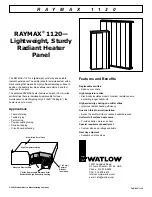
AMR Integrated Water Heaters (Supplement to GF-146)
CHAPTER 4: INSTALLATION - PIPING
4.8 Condensate Disposal
WARNING!
The condensate trap, as shown in Figure 4-8, item “B”, MUST be
filled with water or combustion gases will enter the room. The
condensate neutralizer tank must be installed into the unit, exactly
as shown in Figure 4-8. Do NOT remove the condensate neutralizer
tank from its position while the unit is in operation, as this will result
in combustion gases entering the room, which can result in
excessive levels of carbon monoxide.
The unit is equipped with a condensate neutralizer tank for the evacuation of condensate and to
prevent the leakage of combustion products. The condensate drains from the flue exhaust outlet
“A” (Figure 4-8) through pipe to condensate neutralizer tank, drains through hose “C” and then out
the drain pipe (Figure 4-9), and empties into the floor drain or drain pan (Figure 4-9). The
condensation disposal system must:
•
slope the condensate tubing down and away from the water heater, without any
subsequent elevation, into a drain or drain pan (See Figure 4-9). Condensate from
the water heater will be slightly acidic (around pH 4). The neutralizing tank (see Figure
4-8, item “B”) is built into the water heater and will neutralize the condensate products;
•
be carried out with a pipe with an internal diameter equal to or greater than 3/4
inches (19 mm);
•
be installed in such a way so as to avoid the freezing of the liquid;
•
never discharge into gutters or rain collectors;
•
be properly pitched towards the point of discharge avoiding high points (Figure 4-9),
which could place the condensate system under pressure;
Figure 4-8: Condensate Neutralizer Tank
A
= Connected to the Flue Exhaust
B
= Condensate Neutralizer Tank
C
= Condensate Drain Outlet
D
= Tank Cover
A
B
C
D
C
A
B
Page
26
of
52
AERCO International, Inc.
•
100 Oritani Dr.
•
Blauvelt, NY 10913
OMM-0106_0A
PRI - 07/22/15
Ph.: 800-526-0288
GF-146-IR
















































